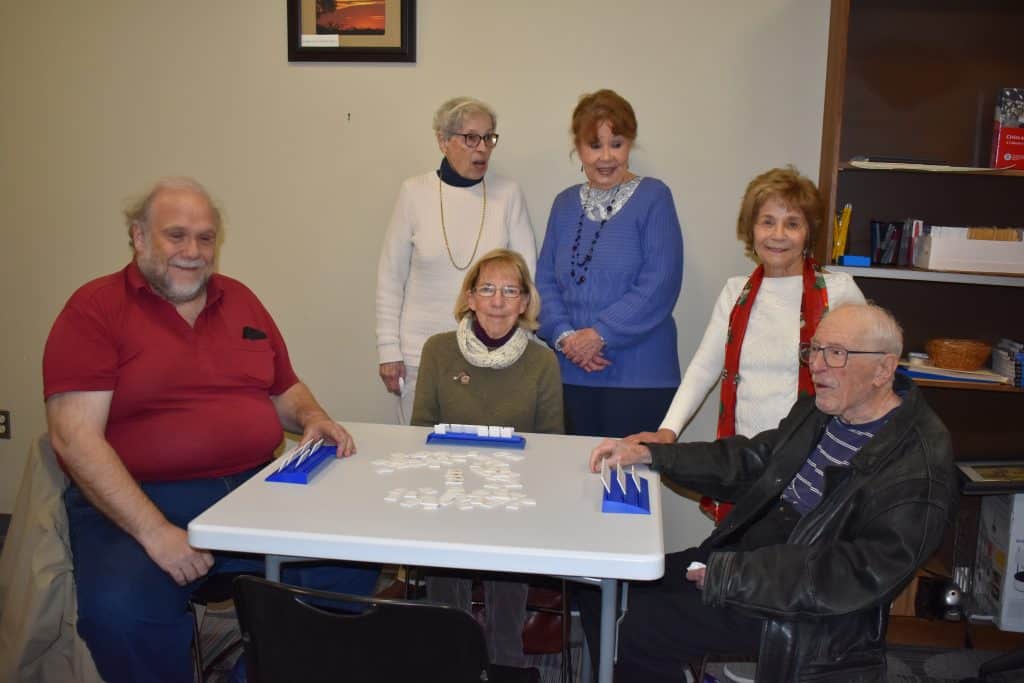
Rummikub players gather in the Moorestown library computer lab every Wednesday to have fun, enjoy good company and wonder why Murray Rosenblatt, 97, always seems to win.
Sure enough, he was the first person to win a game on Dec. 6 by getting rid of his final tile.
“This is one of the few things I can still do. I’m almost 98,” Rosenblatt said about Rummikub, which is based on the rummy card game but has tiles representing two decks and two jokers.
“Murray usually wins,” acknowledged David Bicking, who leads the group when Joan Bart is unable to attend the two-hour-long, noon competition.
“I love the people,” said Kathy Kilker, who was playing a three-person match with Gail Greenberg and Linda Porter. “Rummikub is an enticing game that keeps our minds sharp.”
“The library is so welcoming, and we enjoy coming here,” Greenberg noted.
“I enjoy the challenge and camaraderie,” said Porter, adding that the group originally met twice a month, but due to its popularity, Rummikub will meet every week beginning with the new year.
“Joan will be the leader the first three Wednesdays of the month, and I will be the leader the fourth and fifth Wednesdays,” Bicking said.
“It’s a thinking game, and it’s a fun game,” added Nancy Pastorius, who was in the match with Rosenblatt and Bicking.
All players say the tile-based game is easy to learn and good for the brain. It can be played with two, three or four players, and it combines elements of rummy and mahjong. There are 106 tiles, including two jokers. The 104 other tiles are numbered 1 to 13, with four colors and two copies of each tile.
To start, the players take 14 tiles each and the rest go in a small bag. Then they try to put down three or four of a kind or even six or seven consecutive numbers of the same color. If they cannot make a play, they pick another tile.
Bicking said a player cannot open using a joker, which can represent any tile. To go out, a player can use two tiles with the same number and the joker for the win.
“The joker is confusing, but these are the rules we use,” he explained.
As the end-game approaches, a player does not have to declare when he or she has one tile left, but “it is good manners,” Kilker related.
“The games usually last 20 to 25 minutes, and we get to play three or four games during the two hours,” said Bicking, adding that the strategy involves mixing and matching the tiles already played.
Rummikub was created in the late 1940s by Ephraim Hertzano, a Jew who was born in Romania and immigrated to Israel, where he hand made the first sets of tiles in his backyard and sold them to neighbors and at small shops on consignment.
People liked playing it, and by the 1970s, it was being exported to the United States, where it was originally marketed as Rummikid. Amazingly, by 1977, it was one of the best-selling games in the nation.
The popularity of Rummikub continues to grow, especially on Wednesday afternoons, when the biggest challenge is trying to defeat Murray “The Wizard” Rosenblatt.
The library offers a large variety of adult programs, including chess, mahjong, weaving lessons and history presentations. For information, visit the library website or call (856) 234-0333.









